My garden is a place of serenity, which I set out to create.
Everything that follows is predicated on the idea that plants are integral to a garden. In other words, I’m not talking about a concrete jungle or a sculpture garden, or a Japanese stone garden.
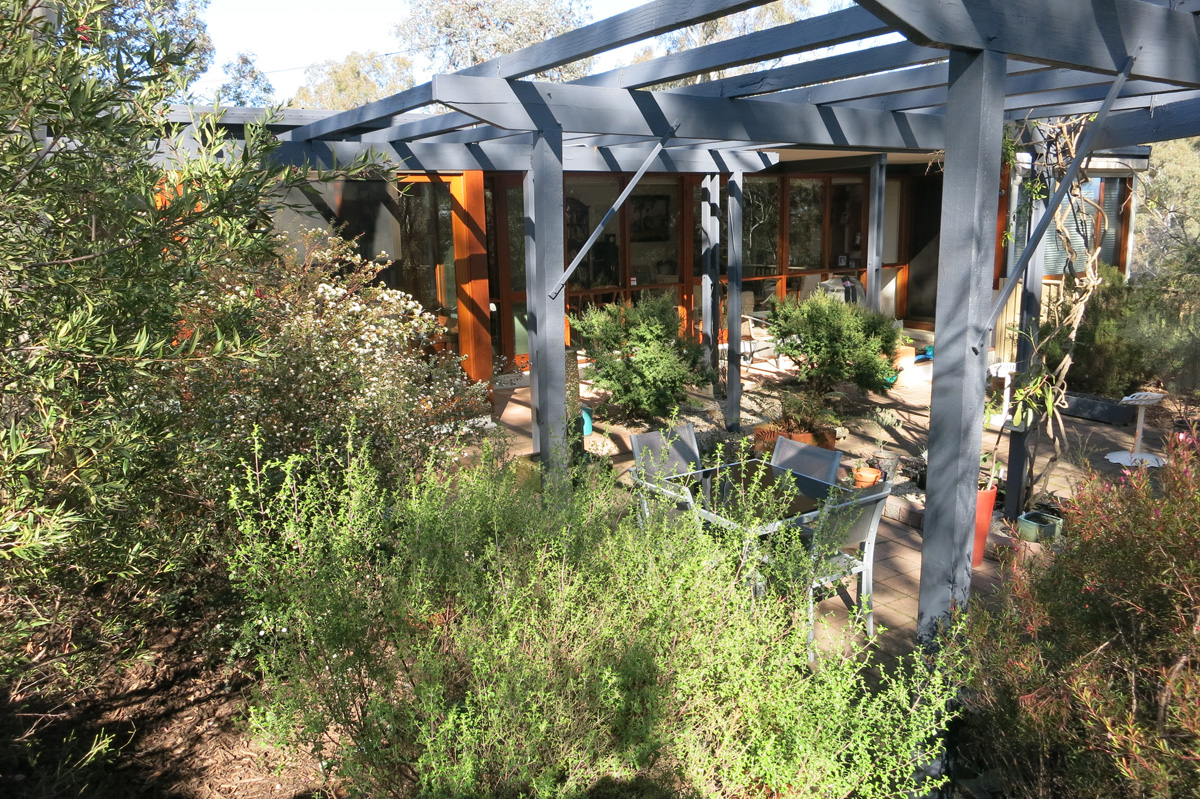
Creating a feeling of serenity
I heard an interesting statement this morning on Radio National’s Design program that got me thinking. The person being interviewed, an eco-architect, suggested that “the main point of (good) architecture is to produce a feeling of serenity”.
I like this idea. I relate to this idea.
Whether you agree with it or not, what informs this idea is the notion that architecture has the ability to move us, to work on our emotions. By implication architects design environments that will make us feel . . . something. In this case, it is serenity.
Similarly, garden design can also make us feel something.
Developing a serene garden requires answering some questions.
- One of the overarching questions is “how do you want to use the garden?”
- Another more difficult question is “how do you want the garden to make you feel?”
Wildlife enjoys my garden
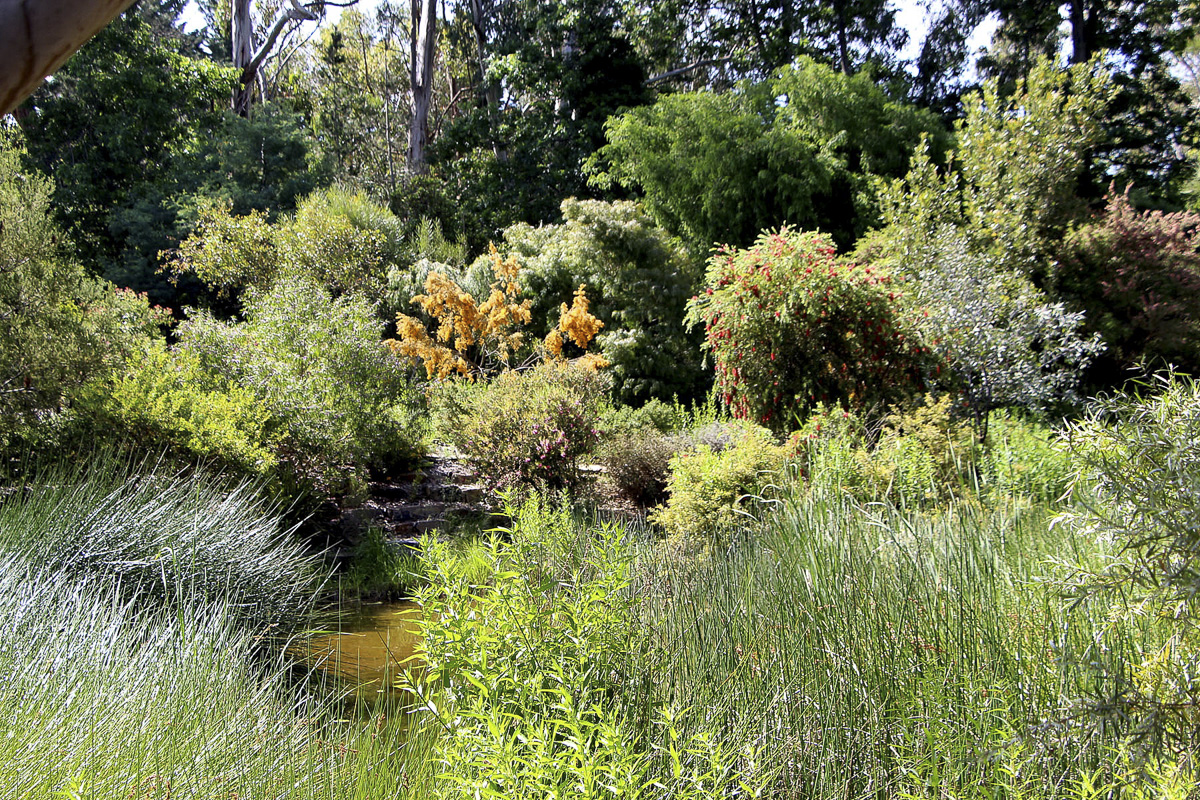
I am sitting here watching a family of superb blue wrens hop around the garden, drink and bathe in a large terracotta bowl. Their wren-hopping ways interspersed with short flights makes me smile. One of my favourite little birds, a spotted pardalote, has landed on the edge of another bowl.
I’m privileged but not entirely lucky, unless you count the fact that cats haven’t dispatched these beauties yet.
I created this garden to provide a haven for birds and other wildlife like frogs and lizards and insects. It makes me feel good to share my space with the natural world because I see that as important. The presence of wildlife creates a feeling of serenity.
My garden is relaxing!
Wildlife habitat is just one of the things that underpinned my choice of garden design and plant selection. Just as much I wanted a garden that makes me feel relaxed. How to achieve this effect is much more complex as, for me at least, it relies on so many things like:
- Curved pathways and/or foliage creeping out onto pathways to soften hard edges.
- Soft foliaged plants that weep; growth habit that is decumbent and relaxed.
- Areas of dappled shade balanced with open sunny areas for seasonal amenity and light effects.
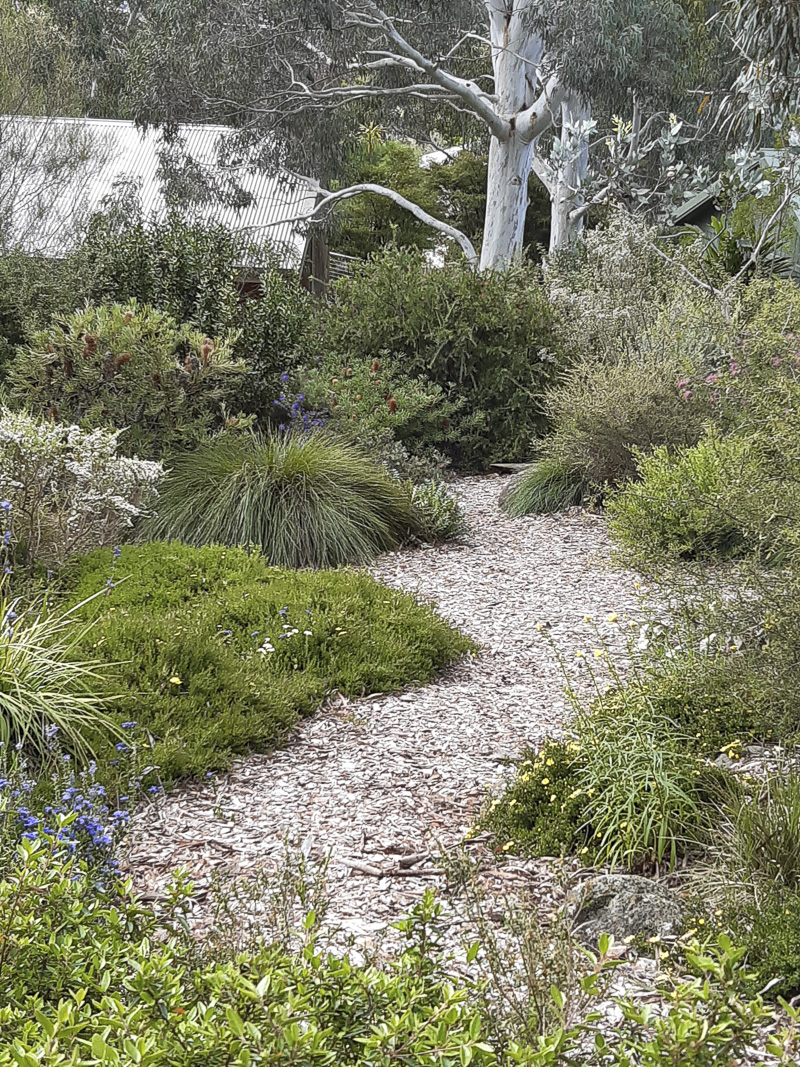
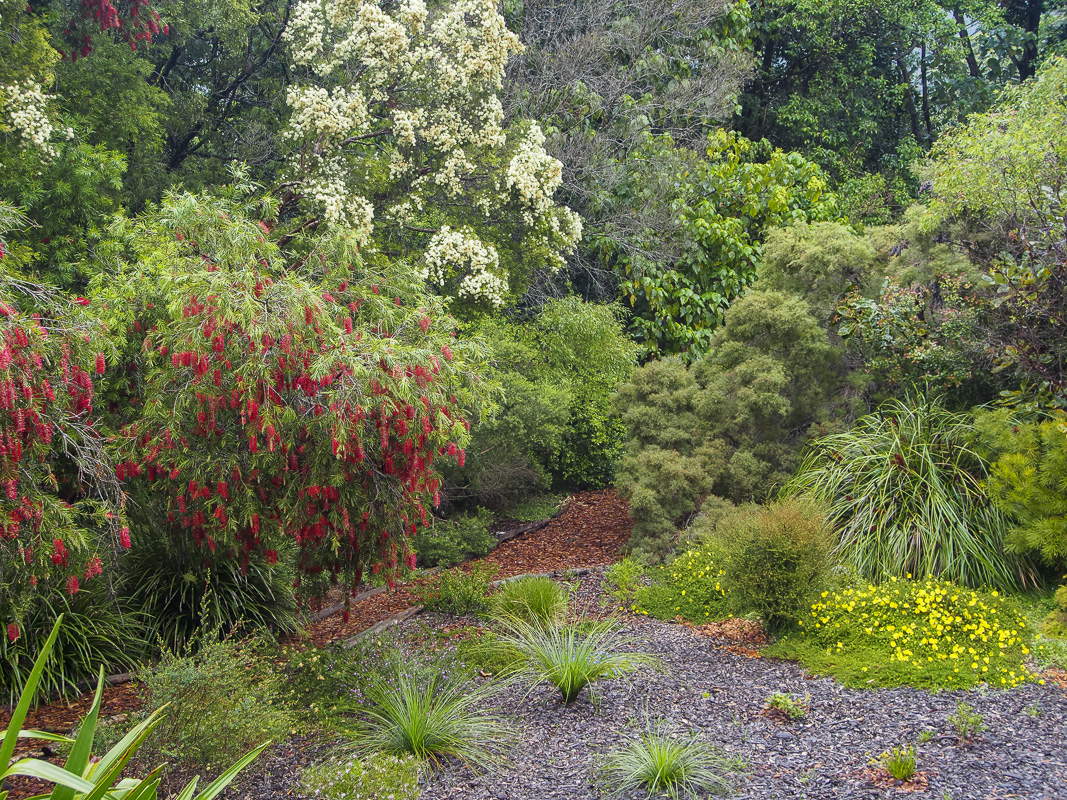
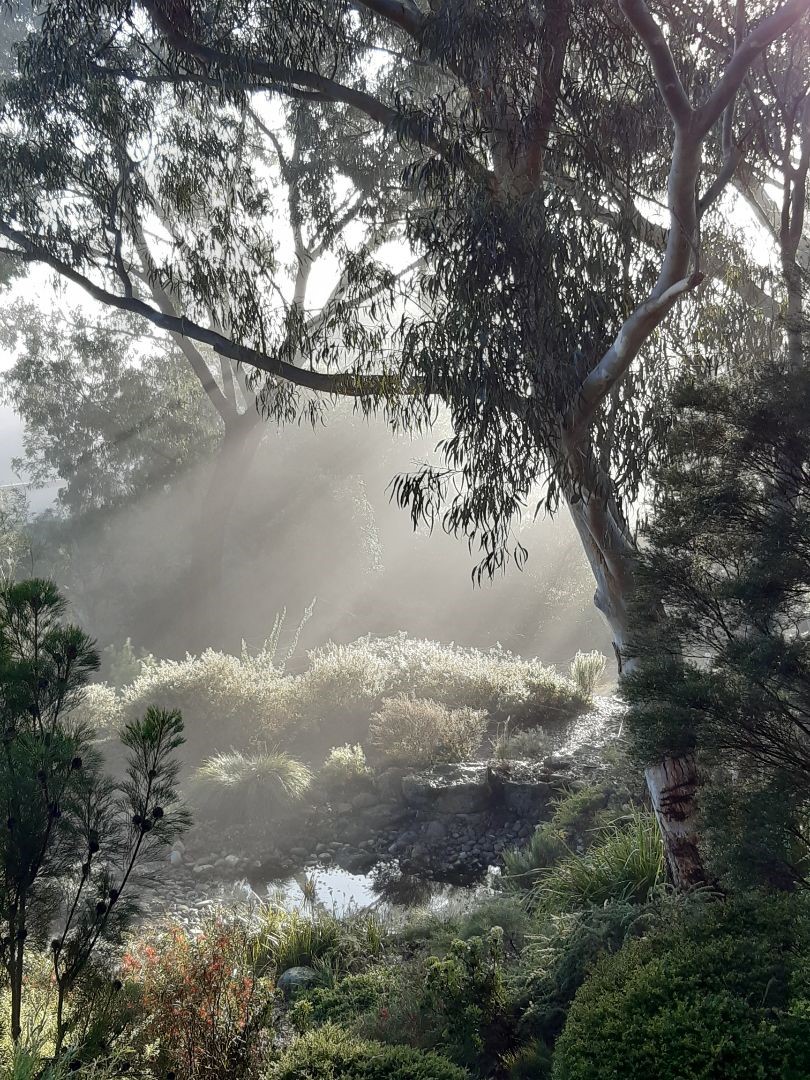
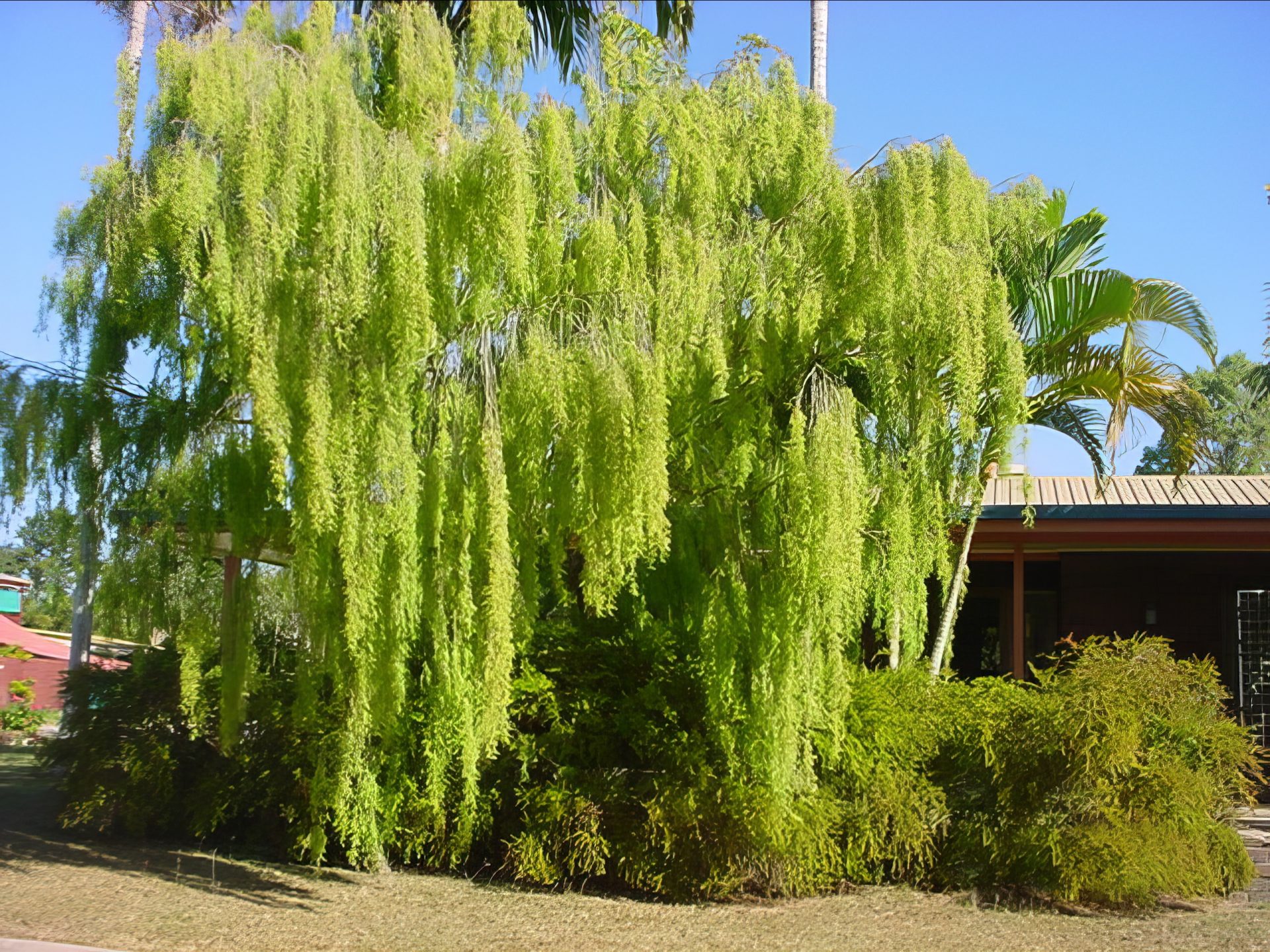
- Plant choices and arrangements that create an increased sense of open space.
- Pleasing arrangements of differing plant foliage to complement and contrast, providing enough variation to be interesting and enough sameness to soothe.
- Sufficient repetition of the similar plants to produce a feeling of ease rather than something that is overly busy.
And this list could go on and on. These are all elements that create a sense of serenity. This is the complexity of garden design.
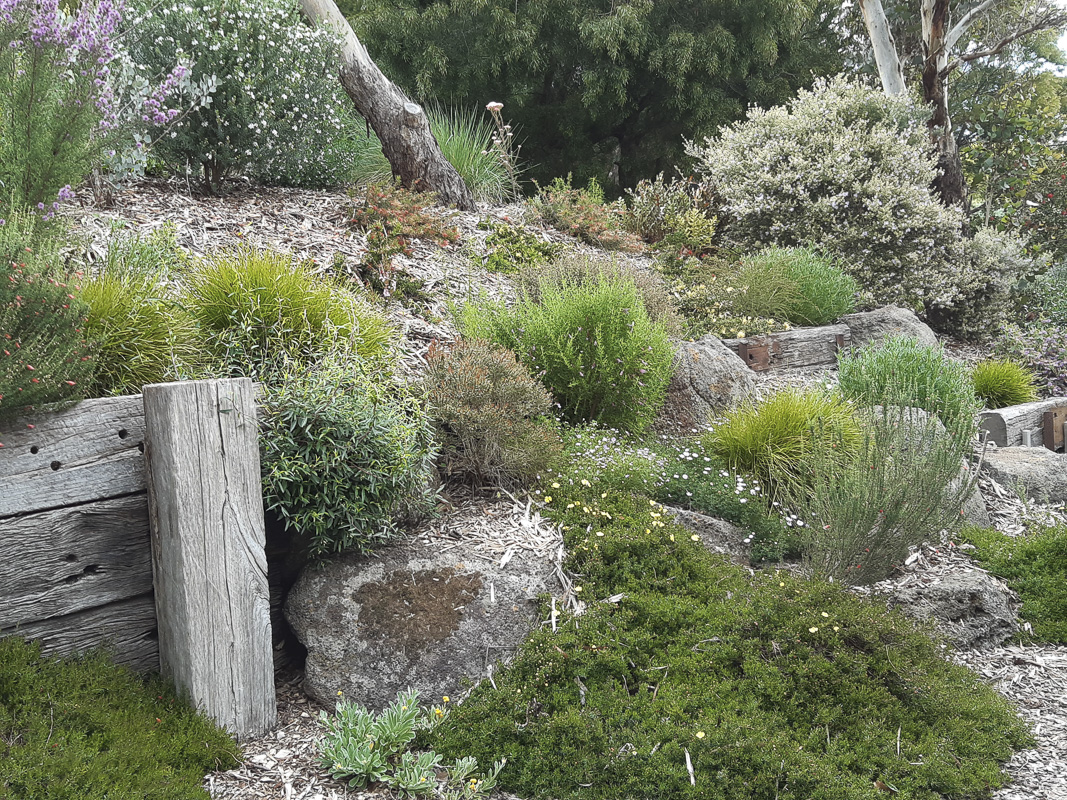
 Australian Native Plants Society (Australia)
Australian Native Plants Society (Australia)